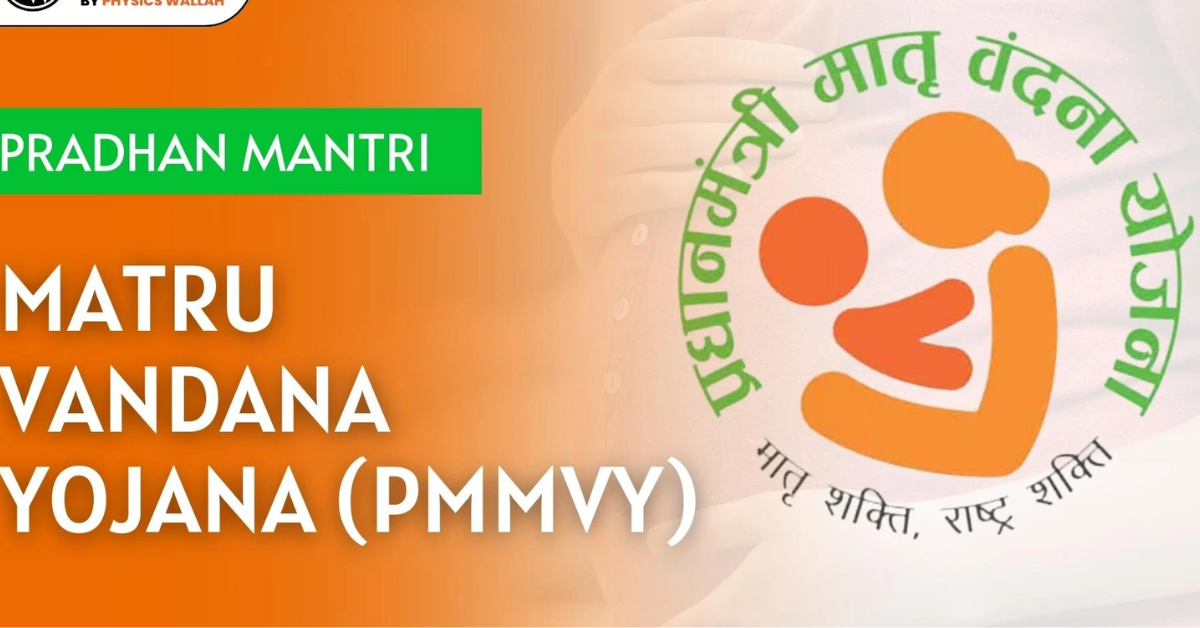The Pradhan Mantri Matru Vandana Yojana (PMMVY) is a flagship maternity benefit program initiated by the Government of India in 2017. Aimed at addressing the nutritional and financial needs of pregnant and lactating women, the scheme is designed to promote safe motherhood and ensure the health of both mother and child. This initiative marks a significant step in reducing maternal mortality and improving child health outcomes across the country.
Objectives of Pradhan Mantri Matru Vandana Yojana
The PMMVY was launched with the following objectives:
- Promoting Maternal Health:
- Improve the health and nutrition of pregnant women, reducing complications during pregnancy and childbirth.
- Reducing Maternal Mortality:
- Address key risk factors contributing to maternal deaths by providing financial support.
- Encouraging Safe Deliveries:
- Promote institutional deliveries to ensure safe childbirth under medical supervision.
- Compensating Wage Loss:
- Provide partial compensation for wage loss to pregnant women, enabling them to rest and recuperate during and after pregnancy.
- Enhancing Infant Health:
- Ensure proper nutrition for lactating mothers to support healthy breastfeeding practices.
Key Features of PMMVY
- Cash Incentive:
- Under the scheme, a direct cash benefit of ₹6,000 is provided to eligible pregnant and lactating women in three installments, ensuring financial support at critical stages:
- First installment of ₹1,000 upon early registration of pregnancy.
- Second installment of ₹2,000 after at least one antenatal check-up.
- Third installment of ₹3,000 post-delivery, upon the child receiving the first cycle of vaccinations.
- Under the scheme, a direct cash benefit of ₹6,000 is provided to eligible pregnant and lactating women in three installments, ensuring financial support at critical stages:
- Eligibility Criteria:
- The scheme covers pregnant women and lactating mothers who are 19 years or older and are not employed by the central or state government.
- It applies to the first live birth of the family.
- Digital Monitoring:
- The scheme uses a digitized system for registration, tracking, and disbursement of benefits, ensuring transparency and accountability.
- Implementation:
- The program operates through Anganwadi Centers and healthcare facilities in both rural and urban areas, engaging frontline workers such as Anganwadi workers and ASHAs.
Importance of PMMVY
India faces significant challenges in maternal and child health, including malnutrition, anemia, and high rates of maternal mortality. PMMVY addresses these issues by:
- Reducing Anemia and Malnutrition:
- Cash incentives help women afford nutritious food, improving their health during pregnancy.
- Promoting Institutional Deliveries:
- Financial support motivates women to choose hospitals for delivery, reducing the risks associated with home births.
- Encouraging Early Vaccination:
- Linking benefits to vaccinations ensures timely immunization for infants, reducing infant mortality rates.
- Empowering Women:
- The scheme empowers women by recognizing their critical role in ensuring family and societal well-being.
Achievements of PMMVY
Since its inception, PMMVY has achieved several milestones:
- Widespread Enrollment:
- Millions of women have benefited from the program, especially in states with high maternal mortality rates.
- Reduction in Maternal Mortality Ratio (MMR):
- States implementing PMMVY have shown a noticeable decline in MMR, reflecting improved healthcare access.
- Improved Nutrition:
- Beneficiaries report better access to nutritious food during pregnancy and lactation periods.
- Increased Institutional Deliveries:
- The scheme has contributed to a rise in institutional deliveries, ensuring better medical care.
Challenges in Implementation
While PMMVY has been a significant step forward, it faces challenges that need to be addressed:
- Low Awareness:
- Many eligible women are unaware of the scheme or its benefits, especially in rural areas.
- Delays in Disbursement:
- Beneficiaries often face delays in receiving payments due to bureaucratic hurdles.
- Exclusion Errors:
- The restriction to the first live birth and formalities for registration exclude many deserving women.
- Inadequate Coverage:
- The amount provided (₹6,000) may not be sufficient to cover all nutritional and healthcare needs.
Recommendations for Improvement
- Enhancing Awareness:
- Conduct widespread awareness campaigns using media, community outreach, and healthcare workers to educate women about PMMVY.
- Streamlining Processes:
- Simplify registration and payment processes to reduce delays and ensure timely benefits.
- Extending Coverage:
- Expand eligibility to include subsequent pregnancies and informal sector workers.
- Increasing Incentive Amount:
- Adjust the cash benefit to account for inflation and regional cost differences.
- Strengthening Monitoring Systems:
- Use technology to track beneficiaries and ensure efficient fund utilization.
Success Stories
PMMVY has positively impacted the lives of many women across India. For instance:
- In Madhya Pradesh:
- The state has seen a significant rise in institutional deliveries due to effective implementation of PMMVY.
- In Bihar:
- Beneficiaries report improved health and reduced financial stress during pregnancy.
- In Rajasthan:
- Women in remote areas have accessed better healthcare facilities and support through the scheme.
Conclusion
The Pradhan Mantri Matru Vandana Yojana (PMMVY) is a critical initiative in India’s efforts to improve maternal and child health. By providing financial support and promoting safe motherhood, it has laid the foundation for a healthier future. However, addressing its challenges and expanding its scope can ensure that no mother or child is left behind. With continued efforts, PMMVY can play a transformative role in achieving India’s maternal and child health goals.


